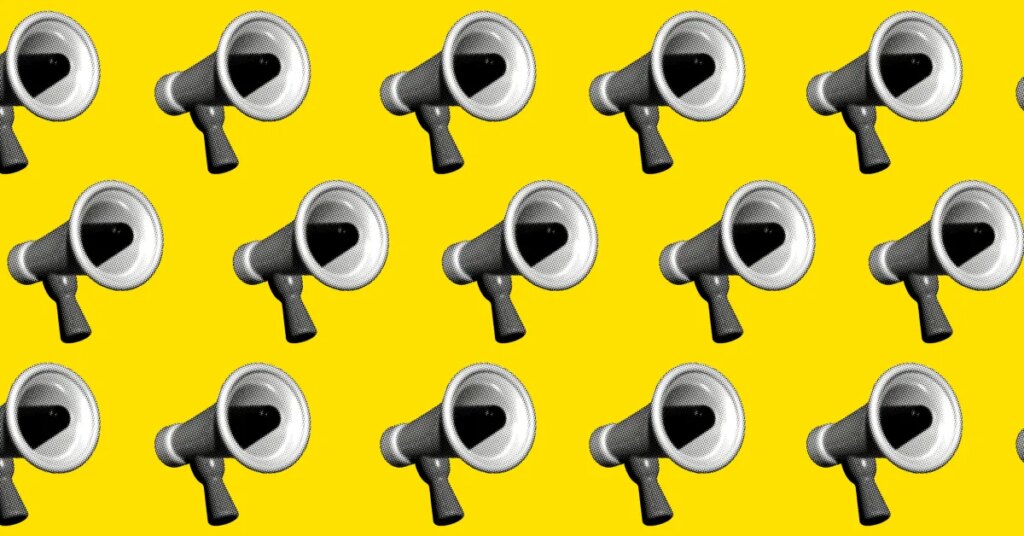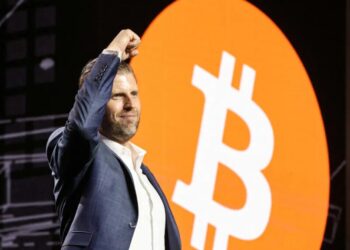On a sweltering August afternoon in 1918, on the fourth floor of a hat factory on east 93rd Street in Manhattan, a young Russian immigrant named Hyman Rosansky tossed anti-war flyers out the window to the street below. The flyers urged workers to stage a general strike opposing American involvement in World War I and encouraged young men to boycott the draft. A pedestrian on the street handed one of the flyers to a local cop on the beat. A few hours later, Rosansky and several colleagues were arrested and charged under the Sedition Act of 1918 for impeding American war production and inciting resistance to the draft.
[time-brightcove not-tgx=”true”]
Their case, Abrams vs. the United States, went all the way up to the U.S. Supreme Court where the defendants argued that their speech was protected by the First Amendment. But in 1919, the Court did not yet see the First Amendment as protecting freedom of expression such as dissent or protest. Until then, the First Amendment was seen as only preventing “prior restraint,” that is, preventing the government from censoring a publication before it went to press. The defendants were convicted—by a vote of 7 to 2—for inciting resistance to the U.S. war effort and using “disloyal, scurrilous, and abusive language about the U.S. government.”
Justice Oliver Wendell Holmes dissented, and his short, beautiful opinion contains the modern basis for the marketplace of ideas model of free speech.
“The ultimate good desired is better reached by free trade in ideas—that the best test of truth is the power of the thought to get itself accepted in the competition of the market, and that truth is the only ground upon which their wishes safely can be carried out,” he wrote. “That at any rate is the theory of our Constitution.”
But that market is not working like it should, and is giving disinformation free rein while eroding the foundations of factual discourse.
The history of the marketplace of ideas theory
The marketplace of ideas theory of free speech was most succinctly framed by Holmes, but it goes back not only to the Enlightenment notions of the Framers but to an even earlier time in English history. In 1644, the great English poet John Milton wrote Areopagitica to protest the English decree that all books and newspapers required government approval before publication. Milton argued that government licensing was a form of censorship and that truth arises through contest and open debate.
“Let Truth and Falsehood grapple,” Milton wrote, “who ever knew Truth put to the worse, in a free and open encounter?”
The idea that truth emerges in the clash of ideas and that a free society depends on an open exchange of views is the basis of our First Amendment. Democracies, James Madison said, depend on information, truthful information. That is how the consent of the governed is derived. He wrote, in the Federalist Papers, why the free flow of information must be protected. The idea is that truth is tested by exposure to falsehood and emerges in an open encounter with its challengers.
This idea is a consistent thread through our history.
Here’s Benjamin Franklin in 1731, “When truth and error have fair play, the former is always an overmatch for the latter.”
Thomas Jefferson, in his First Inaugural in 1801. “Error of opinion may be tolerated where reason is left free to combat it.”
And all the way to JFK: “A nation that is afraid to let its people judge the truth and falsehood in an open market is afraid of its people.”
But, how does the marketplace of ideas actually work? Do truth and falsehood wrestle? Does truth get falsehood in a headlock and pin it to the ground? How does truth overmatch falsehood—is truth somehow more powerful? How do we know truth when we see it? Does it come highlighted in yellow? Do people somehow recognize truth and buy it, and put falsehood out of business?
It’s a lovely idealistic idea, and I devoutly wish it were true, but I’m afraid it is a bit of a fairy tale.
This idea of truth magically winning out over falsehood continued in the 1962 case of New York Times Company v. Sullivan—which stands as the basis of our modern interpretation of the First Amendment. In the case, Alabama Public Safety Commissioner, L.B. Sullivan accused The New York Times of libel for publishing an ad on behalf of Martin Luther King, Jr. The ad included some factual errors, but ultimately, the court sided with the paper, establishing that libeling a public figure requires that the press write with “actual malice” (i.e., publishing knowing something is untrue) or “a reckless disregard for the facts.”
The idea was that in a republic it was so important for the press to be able to examine our democratically-elected leaders that the law tolerated inaccuracies in an effort to get at the truth.
Writing for the court, in a unanimous decision, William Brennan declared there is a “profound national commitment to the principle that debate on public issues should be uninhibited, robust, and wide-open, and that it may well include vehement, caustic, and sometimes unpleasantly sharp attacks on government and public officials.”
In fact, the modern court protects error for the sake of truth. Even though, as the court said, there is no constitutional value in false statements of fact, we must tolerate falsehoods in society’s efforts to ferret out the truth.
The impact of the marketplace of ideas theory cannot be overstated. Even Citizens United, which eliminated restrictions on campaign donations, invokes a self-regulating marketplace of ideas model to justify corporate speech and spending.
Beyond the marketplace of ideas
Until the last decade or so, the word “disinformation” was unfamiliar and uncommon.
From the 1950s through 2012, the use of the word itself in the press was rare to nonexistent. It became more common between in 2014 (around the same time as the use of the phrase “fake news”) and 2020 and has since plateaued and declined.
The word and the concept of disinformation originated in the Soviet Union in the 1940s, coined by Stalin’s intelligence services, to describe creating false information to mislead people. Dezinformatsiya. Here’s how it worked: Russian intelligence would plant a false story, usually a conspiracy theory—say, that the CIA created AIDS in laboratory in Fort Detrick, Maryland—in a small newspaper in, say, India. The idea is that it would then get picked up by larger and larger newspapers in the West and become an “alternative fact.”
The two brilliant insights of dezinformatsiya was that first, it should have at least a kernel of truth to it. And second, that it did not need to persuade people, only make them question what the reality was. You didn’t have to believe it, but if it made you question what was the truth, it was successful. Disinformation is one of the foundations of the post-truth world.
In 2014, we in the US government discovered there was an office in St. Petersburg known as the Internet Research Agency, which was what was known as a troll farm, with actual young Russian men and women spending all day pretending to be, say, a librarian from St. Louis or a teacher from Des Moines, and planting false stories in American social media to try to influence the 2016 election.
That’s a fact.
The democratization of disinformation
What has changed from that period until now is the mass democratization of disinformation. Today, we are all our own vectors of mis-and-disinformation. The firehouse of falsehood is everywhere. Conspiracy theorists have been mainstreamed—professionalized. AI takes the cost of creation to zero. Distribution was once the hard part. Now, the cost of distribution is also close to zero and reach is infinite.
When the marketplace model of speech was conceived, it was based in part on the great 18th century economist Adam Smith’s notion of the invisible hand, the idea that markets work to naturally benefit consumers and competition creates efficiency. But today, the big platform companies make the market. Their design and engagement metrics and algorithmic ranking are the new invisible hand of information.
Information asymmetry and amplification bias, Cass Sunstein has written, distorts the market. That new invisible hand privileges emotion, virality, and profits. Cheap speech creates more bad speech which is then multiplied at an exponential scale. As Renee DiResta has written, the supply of disinformation will soon be infinite.
There once was a generally accepted distinction between information we knew to be factual and information we knew to be false. That distinction seems to have vanished. Especially when you have the president of the United States spouting clear falsehoods.
The great sea change is that speech is no longer scarce, but attention is. When the First Amendment was written, the scholar Richard Brown has noted, only about a quarter of households owned a book besides the Bible and only half of the free white male population read newspapers. Speech needed protection then because it was rare. Today, we live in a time of information overload. Content is infinite, but our time is not. Hence, the attention economy where so much content is competing for so little time. A wealth of information, the economist Herbert Simon wrote, creates a poverty of attention.
The challenge today is not just state suppression of speech, but private suppression of speech. Troll armies and bots mobs can drown out and suppress the speech. Harassment, threats, and doxxing intimidate speakers. That’s a market distortion, not the market working.
A modern marketplace of ideas should work for the audience as well as the content creators, but speech itself has become a weapon of censorship. That is Steve Bannon’s mantra: “Flood the zone with sh*t.” That’s akin to other countries dumping cheap products into our economy to drive competitors out. We regulate such practices.
Democracies, as Madison said, depend on factual information.
Democracy is in danger when voters can’t agree on a shared set of facts.
That’s the goal of those who flood the market with falsehoods.
This essay was adapted from the 2025 Feingold Lecture at The City College of New York.
The post The Marketplace of Ideas Isn’t Working appeared first on TIME.




